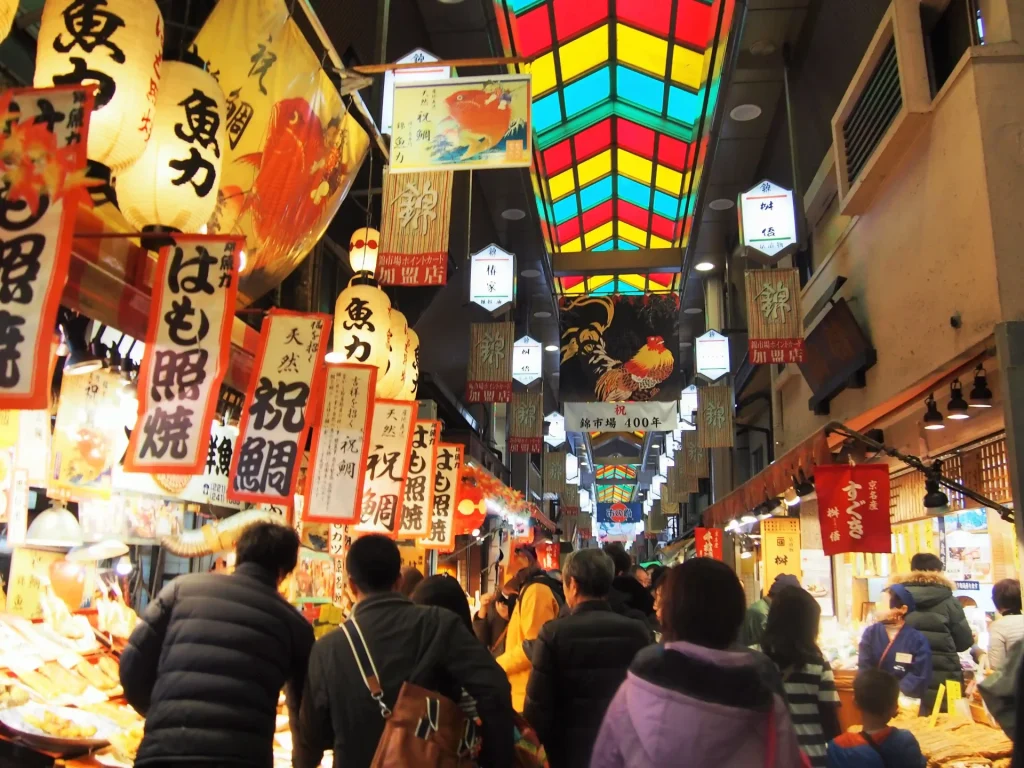KYOTO
Kyoto lets you experience the “spirit of Japan.” Dress in a traditional kimono while you explore the city’s ancient temples and shrines and taste the renowned, high quality Japanese-style cuisine.
RELATED ARTICLES
-

The 8 best winter illuminations in Osaka, Kyoto and Kobe!
Are you wondering where to go sightseeing in Osaka, Kyoto, Kobe in winter? In Japan, major illumination events will be held in various locations. Starting with Umeda, Osaka, the center of Kansai, historic buildings and symbols in Kyoto and Kobe will be decorated with gorgeous colors for a limited period of time. This year, Kobe’s traditional festival, which is filled with the prayers and hopes of the citizens of Kobe, will also make a comeback. Please be sure to include it in your travel plans. ※All photos are for illustrative purposes only. <Osaka>Festival of the lights in OSAKA 2025 <Osaka Umeda>UMEDA SKYBUILDING Christmas 2025 <Osaka Umeda>GRAND FRONT OSAKA「GRAND WISH CHRISTMAS 2025」 <Osaka Umeda>Champagne Gold Illumination in UMEKITA <Osaka Umeda>UMEDA MEETS HEART 2025 <Osaka>OSAKA CASTLE ILLUMINAGE 2025 <Kyoto>NAKED meets NIJO-JO CATSLE 2025 KANGETSU <Kobe>Kobe Christmas Market 2025 “Festival of the lights in OSAKA 2025” is a Major winter event that takes place in various locations throughout Osaka Prefecture! 「Midosuji Illumination 2025」April 9 (Wed)~December 31, 2025 (Wed) Midosuji Illumination 2025 will illuminate Midosuji, the iconic street connecting Umeda, Shinsaibashi, and Namba, for a total length of 4 kilometers. This light path, spanning approximately 4 kilometers in length, is not only the japan’s longest but was also recognized as a world record in January 2015. 「OSAKA Hikari-Renaissance 2025」December 14 (Sat)~December 25, 2025 (Thu) OSAKA Hikari-Renaissance 2025 provides a stunning light display along the waterfront of Nakanoshima, Osaka’s symbol as a water city. The Osaka City Central Public Hall, a designated Important Cultural Property, is a must-see with its stunning 3D mapping LED display! 「Area Program」Event schedule varies by facility and installations Check the official website Venue: The Midosuji area (Hanshin Intersection~Namba West Exit Intersection), Osaka City Central Public Hall~Nakanoshima Park, Expo ’70 Commemorative Park, etc. Date: November 14 (Fri)~December 25, 2025 (Thu) The Umeda Sky Building, one of Umeda’s top attractions, is hosting a dazzling illumination event. In the first-floor plaza, a symbolic tree standing about 25 meters tall and adorned with approximately 130,000 LED lights has been unveiled. This year’s theme is ‘THE CIRCUS OF LIGHT ~ A Fantastical Circus Sparkling in the Night Sky~’. A dazzling and charming daytime circus, and a beautiful nighttime circus emerging from the darkness. Original mugs, which were a big hit last year, also make great souvenirs. Check the official website Date: November 6 (Thu)~December 25, 2025 (Thu) *Partially excluded The giant Christmas tree at the Knowledge Plaza in the North Building of Grand Front Osaka amazes visitors each year with its enchanting design. This year’s tree, titled “Infinity Wish Tree,” features an interior and exterior wrapped in mirrored materials, creating a dazzling display that changes depending on your angle and the moment. Stand in front of the triangular objects surrounding the tree, and you’ll feel like you’ve stepped into a kaleidoscope! It’s also a fantastic photo spot. The lighting show enhances the magical atmosphere with colors shifting between yellow, red, and blue, wrapping the space in an even more enchanting glow. Venue: Grand Front Osaka North/South Building, Umekita Plaza, etc. Lighting show: 16:00〜24:00 on Weekdays, 15:00〜24:00 on Weekends and Holidays *Every 15 mins (Last show at 23:45) Date: November 6, 2025 (Thu)~february 28, 2026 (Sat) The “Umekita Area” illumination event, located north of JR Osaka Station, is a must-see. In addition to Grand Front Osaka, parts of the recently opened Grand Green Osaka and Umekita Park are adorned with approximately 250,000 LED lights. The elegant champagne gold glow creates a romantic and enchanting atmosphere. Venue: Grand Front Umekita Plaza, Grand Green Osaka Umekita Park, etc. Date: December 1 (Mon)~December 25, 2025 (Thu) This year marks the sixth iteration of the event, themed “Five Hearts. Circulating Umeda”. The main event, “HEART FES”, runs for two days from Saturday, December 13th to Sunday, December 14th. It features Christmas concerts, workshops, marching performances, and more across five areas of Umeda. Additionally, “HEART SPOT” sees 47 facilities throughout Umeda joining forces to decorate the entire city with ‘hearts’ and “illuminations”. Venue: Umeda area Date: November 1, 2025 (Fri)~February 1, 2026 (Sun) Osaka Castle’s Nishinomaru Garden lights up with approximately 3.5 million LEDs, set against the majestic backdrop of the castle keep. The illumination features motifs like shoguns, samurai, and helmets, showcasing Osaka’s history from the Sengoku period to the present. It brings the memories of the Warring States period back to life on a breathtaking scale.The Lantern Corridor, layered with Japan’s unique aesthetic sensibility and history, makes its appearance. Countless lanterns stand in orderly rows, creating a fantastical and solemn path of light. The Lantern Corridor, layered with Japan’s unique aesthetic sensibility and history, makes its appearance. Countless lanterns stand in orderly rows, creating a fantastical and solemn path of light. Venue: Osaka Castle Nishinomaru Garden Date: October 31, 2025 (Fri)~December 7, 2025 (Sun) The moon admired by the people of Nijo-jo Castle during the Edo period. This autumn-only, nighttime-limited art exhibition revives its elegance through the fusion of light and traditional culture. Check the official website Venue: Nijo-jo Castle Date: November 8 (Sat)~December 25, 2025 (Thu) A special Christmas event takes place at the Kobe Nunobiki Herb Gardens, located at an elevation of approximately 400 meters. Enjoy breathtaking views of Kobe’s nightscape alongside the garden’s original decorated tower, making it a perfect photo spot! Located just a short distance from Kobe’s city center and the Kitano Ijinkan area, it’s an ideal spot to combine with your Kobe sightseeing plans. Venue: Kobe Nunobiki Herb Gardens & Ropeway ➡Check here for details ▼Check these articles▼ 10 Delicious Gourmet Foods in Kobe! Local Specialties and Local Foods Recommended by Locals First Time in Kobe. 21 Best Things to Do! Sightseeing, Spots, Dining, Model Course
-
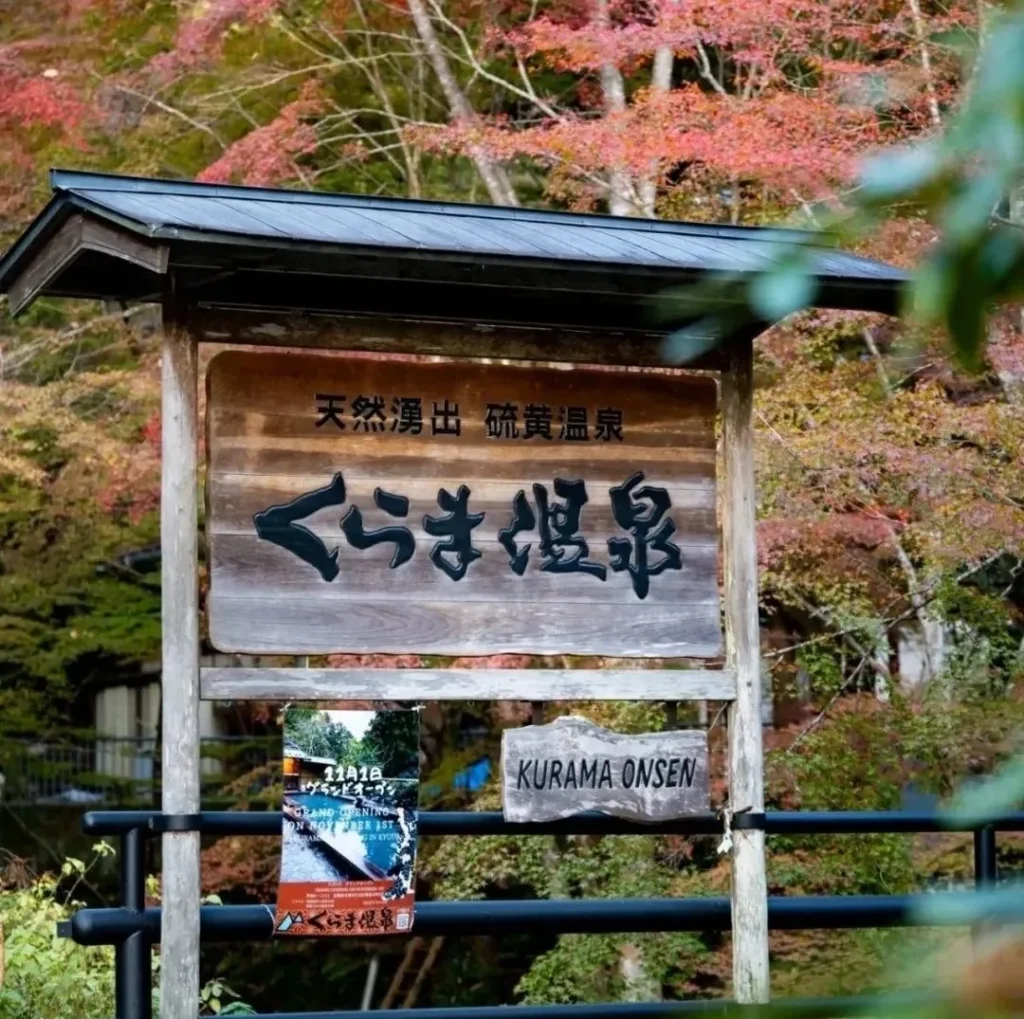
Kurama Onsen|A Hidden Hot Spring Just an Hour from Central Kyoto
Just a short trip from central Kyoto, Kurama is a place steeped in legend, which is said to be home to the mythical tengu, who, according to folklore, once trained the young warrior Ushiwakamaru in martial arts. Nestled amid lush greenery, Kurama Onsen offers a tranquil retreat where you can soak in soothing hot springs surrounded by nature. A visit here is the perfect way to unwind and recharge during your Kyoto sightseeing journey. Index 1. What is Kurama Onsen? 2. How to Get to Kurama Onsen 3. Admission Fees and Opening Hours 4. What to Bring to Kurama Onsen 5. Nearby Sightseeing Spots to Visit Along with Kurama Onsen Just an hour from central Kyoto, Kurama Onsen sits at the foot of Mount Kurama in Kyoto’s Sakyo Ward, surrounded by lush, unspoiled nature. Known as one of Kyoto’s few hidden hot springs suitable for day trips, its iron-rich waters are said to promote beautiful skin and relieve fatigue. From the open-air bath located on an elevated hillside, visitors can take in sweeping views of the surrounding mountains, which change beautifully with each season, offering a deeply relaxing experience that feels like a true retreat into the heart of the mountains. When traveling from central Kyoto to Kurama Onsen, the most convenient way is by train or bus. Here are the two main routes: ・From the Hankyu Shijo-Kawaramachi area [Keihan Main Line] Gion-Shijo Station → Demachiyanagi Station (approx. 5 min) [Eizan Electric Railway Kurama Line] Demachiyanagi Station → Kurama Station (approx. 30 min) Take the free shuttle bus from Kurama Station to Kurama Onsen (approx. 3 min). The shuttle operates in coordination with train arrivals and departures. ・From the JR Kyoto Station area [Kyoto Municipal Subway Karasuma Line] Kyoto Station → Kokusaikaikan Station (approx. 20 min) [Kyoto Bus (Route 52, etc.)] Kokusaikaikan Station-mae → Kurama Onsen-mae (approx. 30 min) From the Kurama Onsen-mae bus stop, it’s about a 1-minute walk to the onsen. Admission fees vary depending on the plan and the day of the week, so be sure to check the price table before your visit. No reservation is required for day-trip bathing, and payment is made on-site. If you’d like to relax fully, the plan that includes access to the indoor bath, open-air bath, and sauna is highly recommended. Towels and room wear are also provided, allowing you to unwind in total comfort. ・Day-trip Admission Fees & Hours Indoor bath, open-air bath & sauna (includes towel & room wear) Open-air bath only Weekdays Weekends & Holidays Weekdays Weekends & Holidays Adults (13 years and over) ¥2,500 ¥2,700 ¥1,400 ¥1,600 Children (3–12 years) ¥1,300 ¥700 Infants (2 years and under) Free Opening Hours 10:00~21:00 Here are some essential items to bring when visiting Kurama Onsen for a day trip. While many things are available for purchase on-site, it’s a good idea to prepare in advance for a smoother experience. ・Towels Bring two types of towels: a small face towel and a larger bath towel. Use the face towel for washing and lightly wiping off water before leaving the bathing area (remember, it’s good manners not to dip your towel into the bathwater). After bathing, use your bath towel in the dressing room to dry off thoroughly, which helps keep the floors clean and dry. ・Coins You’ll need a 100-yen coin to use the coin lockers for your clothes. Don’t worry, the coin is returned after use, so it’s essentially free. It’s also handy to have extra coins for purchasing drinks from vending machines after your bath. ・Hair tie If you have long hair, tie it up before entering the bath. This is a basic etiquette rule to prevent your hair from touching the bathwater. Amenities such as shampoo, conditioner, body soap, and hair dryers are provided at Kurama Onsen, so there’s no need to bring your own. There are several sightseeing spots around Kurama Onsen, making it the perfect area to explore while you’re there. Take your time to enjoy the natural beauty and spiritual atmosphere of Kyoto’s mountain retreat. ・Kurama-dera Temple Located near Kurama Onsen, Kurama-dera is a historic temple famous for the legends of the Tengu (a mythical mountain spirit) and Ushiwakamaru (the young warrior who later became Minamoto no Yoshitsune). Visitors can reach the main hall on the mountain either by cable car (about 2 minutes) or by hiking (around 40 minutes). Many people enjoy taking a relaxing dip in the hot spring after their scenic hike through the forested paths. ・Kifune Shrine Another popular destination is Kifune Shrine, often paired with a visit to Kurama-dera. From Kurama Onsen, take the free shuttle bus to Kurama Station, then board the Eizan Railway to Kibuneguchi Station. From there, take a Kyoto Bus (route 33, etc.) to the Kifune stop, followed by a 5-minute walk to the shrine (about 20 minutes total). Alternatively, you can take the famous hiking route over the mountain through the Kurama-dera temple grounds—a favorite “golden route” among visitors. The trail takes about an hour, so be sure to wear comfortable walking shoes. ▶<Kyoto> Kifune Shrine|Perfect guide from benefits and access to omamori! Just an hour from central Kyoto, Kurama offers a unique hot spring experience surrounded by nature. Alongside the soothing baths, you can immerse yourself in the sacred and tranquil atmosphere of Kurama-dera and Kifune Shrine. It’s a perfect way to refresh both body and mind while discovering a different side of Kyoto.
-
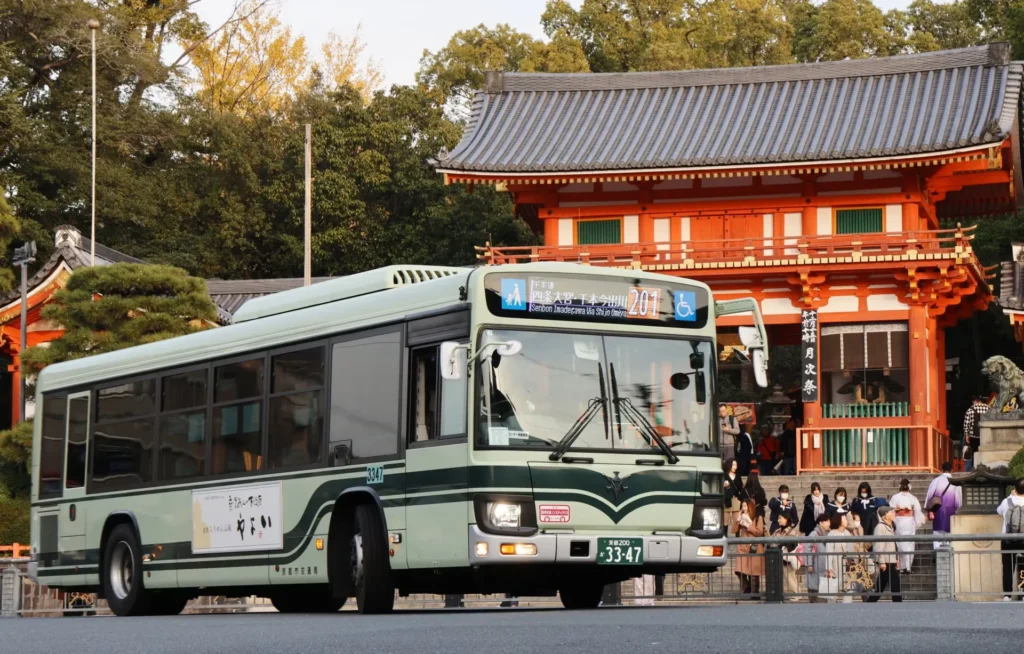
Useful Tips for Traveling in Japan|From Disaster Response to Train Etiquette and Temple Visits
Planning a trip to Japan? Here are some essential tips to make your journey smoother and safer. From reliable resources to use during emergencies, to proper manners on public transportation, and the dos and don’ts when visiting temples and shrines, this guide covers it all. With these in mind, you’ll be able to enjoy your trip to Japan with peace of mind! Index 1. Disaster Preparedness You Should Know Before Traveling in Japan ・Helpful Websites & Social Media During Emergencies ・What to Carry While Traveling in Case of Disaster ・How to Protect Yourself in an Earthquake 2. Train Etiquette You Should Know Before Traveling in Japan 3. Bus Etiquette You Should Know Before Traveling in Japan 4. Temple and Shrine Etiquette You Should Know Before Traveling in Japan When you encounter a disaster in Japan, here are useful websites and convenient items that can help protect yourself. We’ve also summarized quick actions you can take to stay safe when an earthquake occurs. Japan Safe Travel Information Operated by the Japan National Tourism Organization (JNTO), this website provides easy-to-understand maps showing information such as earthquakes, tsunami disasters, heavy rain, and strong wind warnings. It also offers a wide range of links to resources useful for travelers. Japan Visitor Hotline (JNTO Call Center) A reliable 24/7, year-round call center designed to ensure the safety and peace of mind of international travelers in case of accidents, illness, or disasters. Support is available in English, Chinese, Korean, and Japanese. Phone number: +81 50-3816-2787 NHK WORLD-JAPAN The international broadcasting service of NHK, Japan’s only public broadcaster. It provides news and a variety of programs in multiple languages worldwide, while also introducing the latest updates from Japan and Asia, as well as Japanese culture. In addition, JNTO operates social media accounts to share essential information for international travelers during disasters: ●X account: @JapanSafeTravel ●Weibo account: 「安心访日」Japan Safe Travel Mobile Battery Smartphones are essential during disasters—for checking information websites and social media, or using translation functions. However, right after a disaster, it may be difficult to find a place to recharge. Be sure to carry a mobile battery as backup. Mask From autumn through winter, the air tends to get dry, so it’s a good idea to carry a mask. It not only helps prevent throat dryness but also reduces the risk of catching colds or influenza, which can spread more easily during disasters. Snacks & Drinks In large-scale disasters where lifelines are cut off, or if you are stuck in a stopped train, snacks and drinks will be helpful. Filling options such as biscuits or crackers are recommended, while green tea or coffee can provide a refreshing effect. Choose items that can be stored at room temperature. When an earthquake occurs, immediately hide under a sturdy desk or table, protect your head with a bag or cushion, and wait until the shaking stops. Rushing outside in a panic is dangerous, as falling objects are likely. Once the shaking has stopped, carefully exit while avoiding hazards such as broken glass, and move to a safe location. In the event of a major earthquake, there may be a risk of a tsunami. If a tsunami warning is issued, head to higher ground immediately. Japan’s trains are punctual, running according to the timetable, and safe enough that you don’t need to worry even if you fall asleep onboard. While they are highly convenient and reliable, there are also unique rules that you may not find in other countries. Please keep the following points in mind when using trains in Japan: Line up and wait your turn when boarding. Cutting in line is not allowed. Do not leave trash on the train; please dispose of it in the bins located at stations. Be considerate of other passengers and avoid talking loudly. Phone calls should be made in private spaces whenever possible—refrain from talking on the phone inside the train. Especially on local trains, please avoid eating foods with strong smells. In some sightseeing areas, buses are a convenient way to get around. However, in recent years, issues with foreign tourists’ bus manners have become a social concern in Kyoto. Please keep in mind that many people use buses for commuting to work or school. Be sure to observe the following etiquette when riding the bus: Line up and wait your turn when boarding. Cutting in line is not allowed. Do not leave trash on the bus—always take it with you. Be considerate of other passengers and avoid talking loudly. Phone calls should be made in private spaces whenever possible—refrain from talking on the phone inside the bus. Aisles are narrow, so please avoid bringing large luggage (such as suitcases). The space inside the bus is limited, so please avoid eating foods with strong smells. In Kyoto, buses are the main form of transportation, but bringing a suitcase onboard is not recommended. If you have a suitcase, the “Hankyu Tourist Information Center Kyoto Kawaramachi” offers a same-day delivery service that is very convenient. https://enjoy-osaka-kyoto-kobe.com/ja/article/a/baggage-service-kyoto/ Shrines and temples are not originally sightseeing spots but religious facilities. When visiting, please keep in mind the following points to show proper respect and observe good manners. Etiquette at Japanese Shrines 1. Avoid speaking loudly. A shrine is a sacred place. Once you pass through the torii gate, you are in a sacred area. Refrain from making noise and be respectful. 2. Do not eat or drink within the precincts. Many shrines prohibit eating, drinking, or bringing food onto the grounds. Please be mindful. 3. Do not touch the buildings or torii. Leaning on, climbing, or touching the torii is strictly forbidden. Treat them as sacred objects. 4. Check the photography rules. Shrines are places of ritual and prayer. Many areas prohibit photography, so always confirm the rules before taking pictures. 5. Do not walk in the center of the approach. The center path is considered the passage of the deities. Walk along the sides instead. 6. How to pray. Bow once at the torii, purify your hands at the temizuya (water basin), and at the main shrine, follow the standard ritual: two bows, two claps, one bow (ni-hai, ni-hakushu, ippai). Etiquette at Japanese Temples 1. Avoid speaking loudly. A temple is a sacred place. Once you pass through the main gate (sanmon), you are in a holy area. Keep quiet and respectful. 2. Do not eat or drink within the precincts. Eating, drinking, or bringing food into the grounds is often prohibited. 3. Do not touch the statues. Touching or leaning on Buddhist statues is forbidden. They must be treated with reverence. 4. Check the photography rules. At the main hall or in front of the principal image (honzon), photography is often prohibited. Always follow posted signs. 5. How to pray. Bow once at the gate, purify your hands at the temizuya, and at the main hall, put your hands together silently in prayer without clapping. How to Tell Shrines and Temples Apart Shrines: Often have a torii gate and guardian lion-dogs (komainu). Temples: Typically feature a main gate (sanmon), Buddhist statues, or pagodas. By observing proper etiquette and manners, you can fully appreciate the solemn and spiritual atmosphere of shrines and temples during your visit.
-
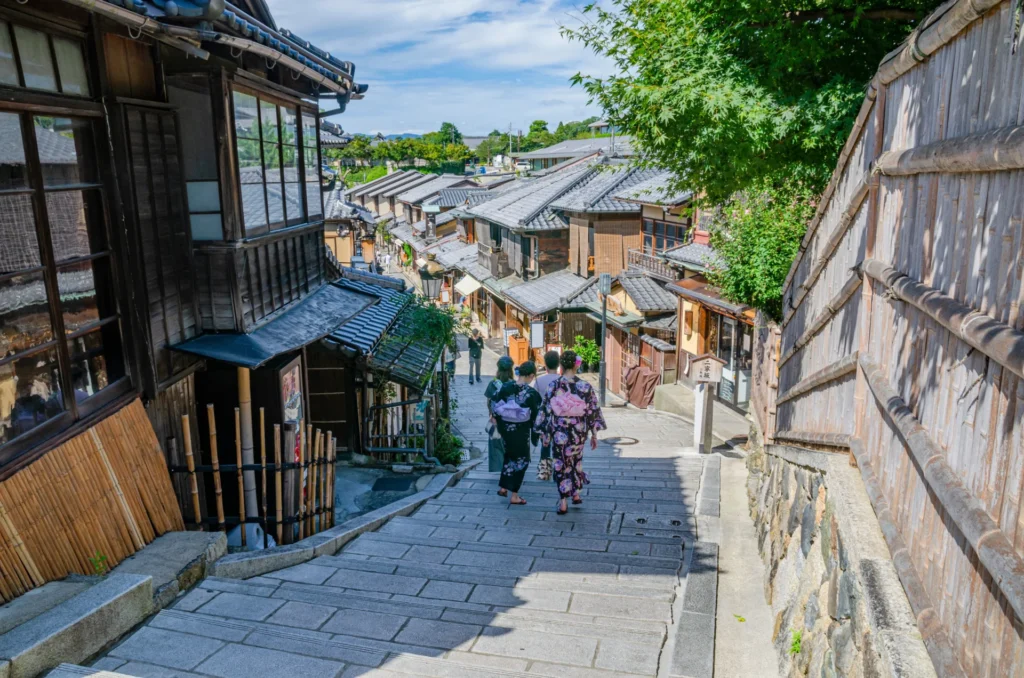
6 Starbucks Stores to Visit in Kyoto and Kobe
“Starbucks Coffee” is loved for its comfortable spaces and high-quality coffee. Did you know that in recent years more stores have been designed to reflect the history and culture of their local areas? Here, we’ll introduce popular Starbucks stores in Kyoto and Kobe that are also worth visiting as sightseeing destinations! Index Starbucks: A Place to Discover Local Culture in Japan Starbucks Coffee Kyoto Nineizaka Yasaka Chaya: Coffee in a Traditional Japanese House Starbucks Coffee Kyoto Karasuma Rokkaku: Blending with a Temple in the Background Starbucks Coffee Kyoto Sanjo Ohashi Bridge: Casual Experience of Kamogawa’s Riverside Dining Starbucks Coffee Kyoto Uji Byodoin Omotesando: A Garden Offering Seasonal Scenery Starbucks Coffee Kobe Kitano Ijinkan: Western-Style House in the Historic District Starbucks Coffee Kobe Meriken Park: A Store with a Stunning View of the Kobe Sea Drinks You’ll Want to Try at Starbucks in Japan Souvenirs to Buy at Starbucks in Kyoto and Kobe These stores are called “Regional Landmark Stores”, built in symbolic locations across Japan to share the culture of each area with the world. They offer the chance to enjoy delicious coffee while taking in the local scenery, blending with traditional architectural styles, or relaxing in unique spaces found only in that region. Leading up to the UNESCO World Heritage Site Kiyomizudera Temple, Ninenzaka is home to Starbucks Kyoto Ninenzaka Yasaka Chaya. Blending seamlessly into the historic streetscape, this store is housed in a traditional Japanese townhouse that is over 100 years old. Amazingly, it is the only Starbucks in the world where you can enjoy coffee while sitting on tatami mats! As you enter through a traditional noren curtain, you’ll walk down the narrow passageway typical of Kyoto townhouses. Beyond it lies a space that feels like stepping back in time to old Japan. Guests can take off their shoes, relax on floor cushions, and enjoy their Starbucks coffee in a uniquely Japanese way. The interior is full of details worth noticing, such as original artwork inspired by the scales of the Siren from Greek mythology (depicted in the Starbucks logo), and fabrics made with Kyoto’s renowned Nishijin weaving. Right next to Rokkakudo Temple in Kyoto’s Nakagyo Ward stands Starbucks Kyoto Karasuma Rokkaku. Designed to blend harmoniously with the temple’s atmosphere, the store incorporates traditional Japanese aesthetics—making it an irresistible spot for fans of temples and shrines. The counter seats by the window are especially popular, offering a dynamic, up-close view of Rokkakudo through a large glass pane. Inside, the wooden tables and chairs create a warm, unified look that feels both modern and deeply rooted in Japanese tradition. Loved by both tourists and locals, this Starbucks is a relaxing place to enjoy your favorite drink while taking in the temple’s seasonal beauty. At the foot of Sanjo Ohashi Bridge, right by Kyoto’s beloved Kamo River, you’ll find Starbucks Kyoto Sanjo Ohashi. The café is filled with natural light pouring through its large windows, creating a bright and open atmosphere. From your seat, you can enjoy sweeping views of the cityscape across the Kamo River, along with the beauty of Kyoto’s changing seasons. The store’s most unique feature is the “Noryo-yuka” terrace, set up from May to September each year. These riverfront decks are a classic summer tradition in Kyoto, usually found at exclusive restaurants—but here at Starbucks, you can experience it casually, without reservations. Sipping your coffee while listening to the river’s gentle flow and feeling the cool breeze is an unforgettable delight. Located along the approach to the UNESCO World Heritage site Byodoin Temple, Starbucks Kyoto Uji Byodoin Omotesando offers a relaxing coffee break with breathtaking views of the temple’s garden. In the evening, the garden is illuminated, creating a completely different atmosphere from the daytime. One of the shop’s highlights is its terrace seating, designed like a traditional Japanese engawa (veranda). The interior also blends tradition and modernity, featuring warm wooden accents and original artwork that combines lacquer with coffee bean sacks. The result is a calming, uniquely Japanese space. Since Uji is famous for its matcha, enjoying a matcha drink here feels extra special compared to anywhere else. Starbucks Kobe Kitano Ijinkan is located in the heart of Kitano Ijinkan, one of Kobe’s most iconic sightseeing areas. Housed in a Western-style residence built in 1907, the store itself is a Registered Tangible Cultural Property. The building’s deep green accents stand out beautifully against the white exterior, making it a popular photo spot. Don’t miss snapping a picture of the custom wooden Starbucks sign, created just for this store. Step inside, and you’ll feel as though you’ve been invited into a historic private residence. Originally built as an American home, the space features a spacious living room, a quiet study, and a charming terrace—each with its own unique atmosphere. Surrounded by furnishings that date back over a century, you can enjoy your coffee break with a touch of nostalgia and elegance. Starbucks Kobe Meriken Park stands right by Kobe Harbor, with a unique exterior designed to resemble a cruise ship. Located within Meriken Park—home to landmarks like Kobe Port Tower and the Maritime Museum—it’s surrounded by plenty of photogenic spots. At night, the illuminated harbor creates a magical atmosphere you won’t forget. Inside, floor-to-ceiling windows offer panoramic views of Kobe Harbor from almost every seat. From the second floor, it feels like you’re cruising from the bow of a ship, while the terrace seating is perfect on sunny days to sip your coffee with a refreshing sea breeze. When it comes to flavors unique to Japan, the Matcha Tea Latte is a must-try. The slightly bitter taste of matcha is perfectly balanced with the sweetness of milk, creating a rich and layered flavor. Other seasonal flavors often include hojicha (roasted green tea), warabi-mochi (bracken-starch dumpling), brown sugar, roasted sweet potato, and more. Be sure to check what’s available when you visit! Starbucks’ local exclusive merchandise makes for very popular souvenirs in both Kyoto and Kobe. Be sure to check out the “Been There Series” stainless steel bottles and mugs, which are available at Starbucks locations all over the world. The KYOTO design features illustrations of a maiko (apprentice geisha), a karesansui (dry landscape garden), and more. The KOBE design showcases the night view of Kobe Port and the Kobe Kitano Ijinkan store, among other local sights. Don’t forget to pick one up as a memory of your trip! Of course, Starbucks is a great place to enjoy delicious coffee, but in Kyoto and Kobe you can also immerse yourself in the region’s history, traditions, and scenery. Be sure to stop by—it’s a unique way to enrich your travel experience.
-
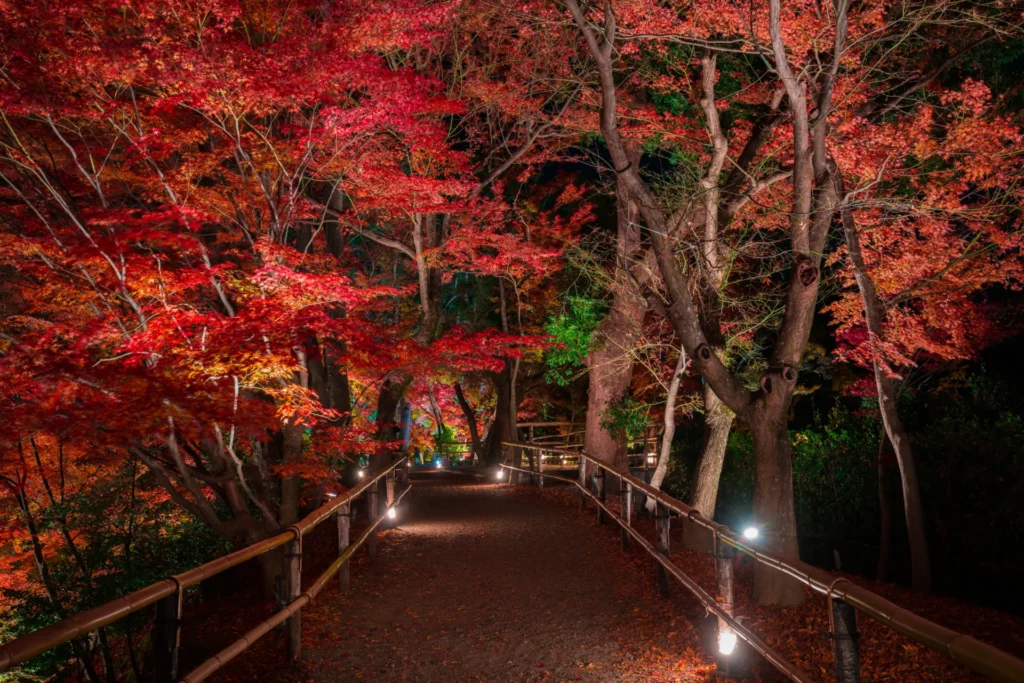
〈2025〉Kyoto’s Autumn Leaves Illuminations Guide
Among Japan’s beautiful autumn foliage, Kyoto is especially popular. Avoid the crowds during the day and opt for nighttime sightseeing instead. Here are recommended spots where you can enjoy special viewings and illuminations until late into the night. Index Konkai-Komyoji Temple “Autumn Special Viewing: Nighttime Visits” Kitano Tenmangu Shrine “Historic Site Odoi Maple Garden Open and Illuminated” Ninnaji Temple “Sea of Clouds Illumination [Nighttime Viewing]” Hogonin “Light-Up & Special Nighttime Viewing” Kyoto Botanical Gardens「LIGHT CYCLES KYOTO」 Saturday, November 15, 2025 – Sunday, December 7, 2025 5:30 PM – 8:30 PM (Last admission at 8:00 PM) Konkai-Komyoji Temple stands on a hill overlooking Kyoto City. The inverted autumn leaves reflected on the water surface of the illuminated “Shiun no niwa(Gareden)”, renowned for its beautiful autumn foliage, are a must-see. Saturday, November 1, 2025 – Sunday, December 7, 2025 Sunset – 8:00 PM (Last admission at 7:40 PM) Kitano Tenmangu Shrine features not only autumn foliage but also bamboo groves, making it a popular photo spot where you can see both at once. The surface of the Kamiyagawa River, flowing north-south through Momiji Garden, turns red color, and the illumination creates a fantastical atmosphere. Friday, October 24, 2025 – Sunday, December 14, 2025 Held on Fridays, Saturdays, Sundays, and holidays 6:30 PM – 9:00 PM (Reception: 6:00 PM – 8:30 PM) ※May be canceled at short notice due to adjustments for memorial services or other events. Ninna-ji Temple, a World Heritage Site, was built in 888. The autumn leaves seen here and there in the vast precincts are magnificent. The Autumn Leaves Cloud Sea Illumination highlights the vibrant foliage adorning structures like the five-story pagoda. Artificial mist is generated, creating a fantastical atmosphere. Friday, November 14, 2025 – Sunday, December 7, 2025 5:30 PM to 8:30 PM ※ Last admission at 8:00 PM Hogonin is one of the sub-temples of Tenryū-ji, “Shishiku no niwa(Garden)”—open to the public during special viewings—is a strolling landscape garden that borrows the scenery of Arashiyama. The green moss is also beautiful, and the contrast between the autumn leaves and moss is magnificent. Saturday, May 24, 2025 – Tuesday, March 31, 2026 September 9 – September 30: 6:30 PM – 9:30 PM (Last admission at 8:30 PM) ※Closed every Monday October 1 – February 28 (tentative) 6:00 PM – 9:30 PM (Last admission 8:30 PM) ※Closed every Monday March 1 – March 31 (tentative) 6:30 PM – 9:30 PM (Last admission 8:30 PM) ※Closed every Monday ※If Monday is a holiday, the performance will be held and the following Tuesday will be closed. Kyoto Botanical Garden, Japan’s oldest public botanical garden, opens its doors at night. This immersive experience event allows visitors of all ages to engage their senses and discover the new charm of plants woven through light and sound. Kyoto is packed with so many autumn foliage spots you can’t possibly see them all in one go, but make the most of the evening hours and enjoy exploring the foliage at your own pace.
-

Kyoto-Half Day Trip|Tour of architect Kengo Kuma’s designs and architectural creations
-

Rakusaiguchi, Kyoto-1 Day Trip|Let’s Go Cycling in The Bamboo Grove!
-

Kyoto-1 Day Trip|Enjoy Handmade Experience! Yuzen Dyeing and Wagashi (Japanese Sweets)
-

【Kyoto】1 Day Trip|Let’s walk around Higashiyama, Kyoto to see the autumn leaves!
-

Arashiyama, Kyoto-1 Day Trip|From Popular Spots to Best Kept Secret Spots!
CATEGORIES
TRAVEL SCHEDULE
*The schedule you enter can be changed anytime.

